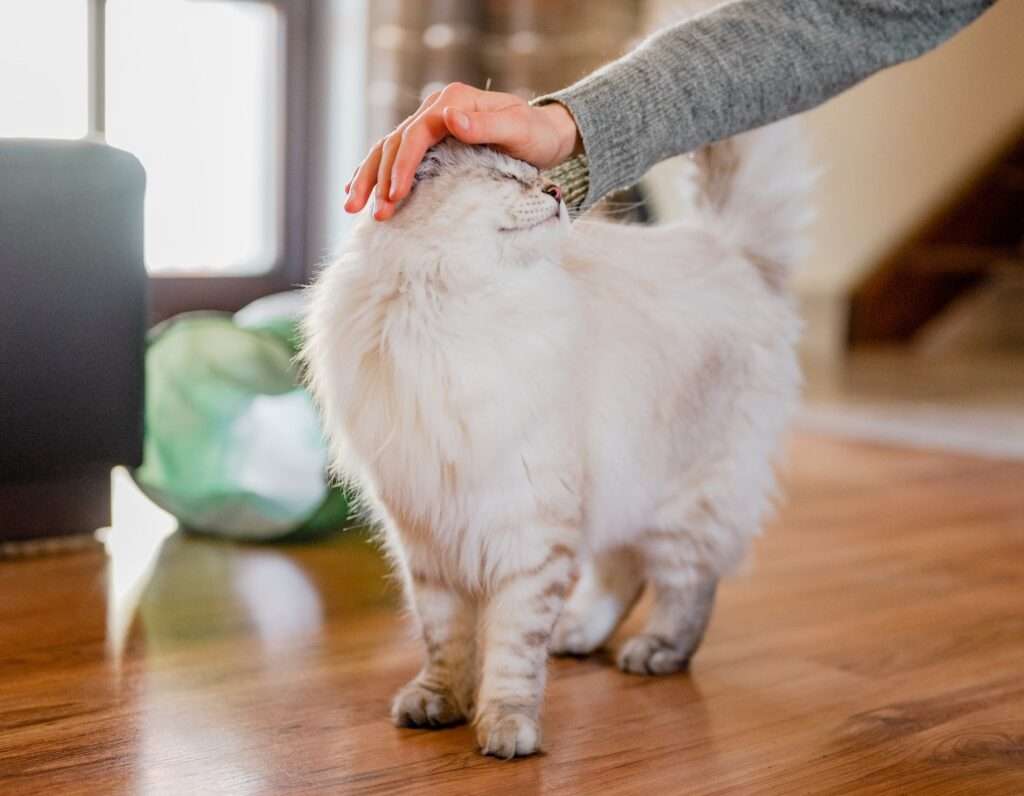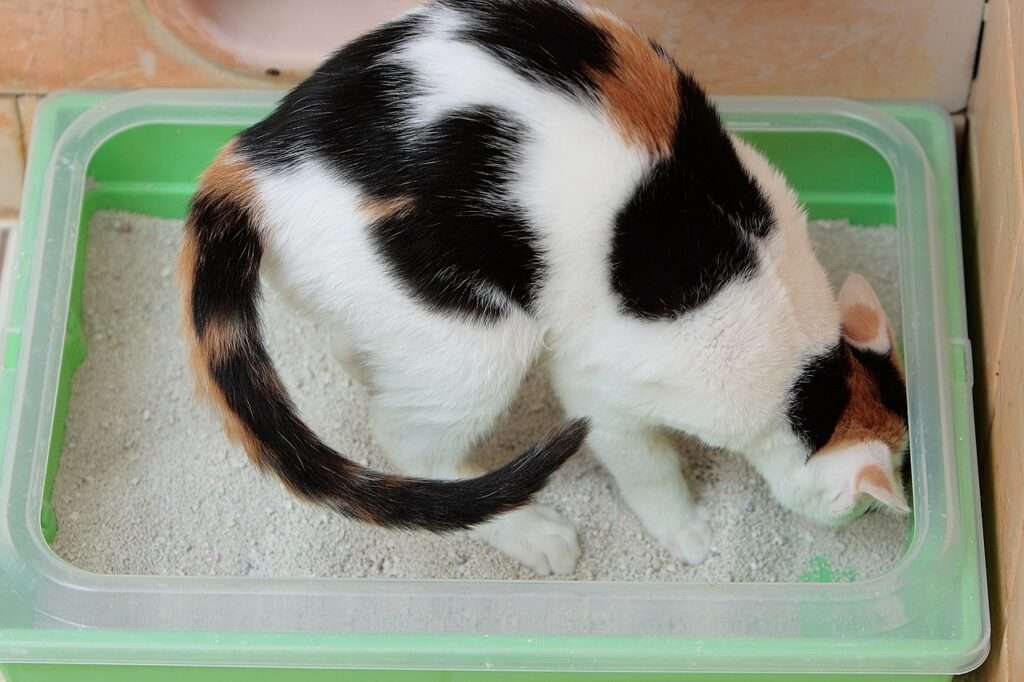Beyond Frustration: How to Punish a Cat for Pooping Outside the Litter Box
Welcome, fellow cat enthusiasts, to a purrfectly informative guide that tackles one of the most common concerns faced by feline aficionados – the mysterious case of cats deciding to do their business outside the confines of their litter box.
At BarkLikeMeow, we understand that maintaining a clean litter box and fostering a harmonious home for your furry companion is at the forefront of your priorities. We’re here to help you navigate through this delicate issue with care, empathy, and the expertise that only true cat lovers possess.
Understanding Your Cat’s Behavior
Before delving into solutions, it’s crucial to grasp the intricate world of your cat’s behavior. Cats, known for their enigmatic nature, have reasons that might seem elusive at first glance. But fear not, for decoding their actions is part of the adventure that comes with being a cat parent.
- Instincts and Territoriality: Your furry friend is hardwired with primal instincts that hearken back to their wild ancestors. Cats are territorial creatures, and the cleanliness of their living space is closely linked to their sense of security. Discovering the underlying territorial triggers behind litter box mishaps is an essential step in resolving this issue.
- Medical Issues vs. Behavioral Problems: It’s imperative to differentiate between potential medical concerns and behavioral quagmires. While a litter box mishap might seem like a behavioral hiccup, it could be your cat’s way of signaling an underlying health issue. Consulting a veterinarian is paramount to ensure your feline friend’s physical well-being before embarking on behavioral interventions.
- Cats’ Sensitivity to Changes: Cats possess a keen sensitivity to changes in their environment. Even seemingly minor alterations can send ripples of stress through their whiskered lives. A sudden switch in their surroundings, introduction of new family members (of the human or four-legged variety), or disruptions in their daily routine can lead to litter box conundrums.
Creating the Ideal Litter Box Setup
Crafting an oasis of comfort for your whiskered companion involves more than just placing a box and hoping for the best. Let’s explore the meticulous details that go into curating the purr-fect litter box haven.
- Selecting the Right Litter Box Type and Size: Just like how every cat has a unique personality, their litter box preferences can be equally distinct. The size, depth, and even entry style of the box matter. Some cats prefer privacy, while others thrive with an open view. Observing your cat’s behavior and adapting the litter box accordingly is akin to tailoring a bespoke suit for them.
- Choosing the Appropriate Litter Material: Litter options are as varied as the patterns on a cat’s coat. From clumping to non-clumping, scented to unscented, the choices can feel overwhelming. Your discerning feline might have specific litter preferences, and catering to those can make all the difference in their litter box satisfaction.
- Optimal Litter Box Placement: Location, location, location—this real estate mantra holds true even in the world of litter boxes. Placing it in a serene and easily accessible spot is essential. Avoid high-traffic areas or places with loud noises that might startle your sensitive companion. Striking the right balance between privacy and convenience is an art worth mastering.
- Providing Multiple Litter Boxes: In multi-cat households, the dynamics change. Competition for resources can lead to territorial disputes and, you guessed it, litter box mishaps. Ensuring there’s more than one litter box available can minimize potential conflicts and offer your cats a range of options that cater to their preferences.
Addressing Medical Concerns First
The path to litter box triumph starts with your cat’s health. As responsible pet parents, we must decipher whether their actions are a cry for help or a behavioral choice.
- Recognizing Signs of Potential Health Issues: Cats are masters at hiding discomfort, but their actions often reveal more than they intend. Frequent trips to the litter box, straining while urinating, or visible discomfort are signals that warrant immediate attention. Keeping an eye out for these signs can be instrumental in catching health issues early.
- Consultation with a Veterinarian: When in doubt, consult a professional. A veterinarian’s expertise can swiftly distinguish between medical conditions and behavioral quirks. Trust their guidance to ensure your cat’s physical well-being is uncompromised.
- Common Medical Causes for Litter Box Avoidance: Urinary tract infections, digestive troubles, and even arthritis can influence your cat’s litter box habits. Understanding these underlying health conditions allows you to provide targeted care that goes beyond the litter box, supporting your feline friend’s overall health.
Identifying Behavioral Triggers
Understanding the enigmatic world of feline behavior requires a Sherlockian level of observation. Cats communicate in subtle ways, and decoding their signals can lead to litter box solutions that’ll make both you and your fur baby content.
- Stressors and Anxiety-Inducing Factors: Just like humans, cats experience stress and anxiety. Changes in routine, unfamiliar visitors, or even rearranged furniture can turn their serene world topsy-turvy. Identifying these stressors is akin to finding the missing puzzle piece that brings clarity to the picture.
- Changes in the Household Environment: Cats are creatures of habit, and even the slightest changes can create ripples of uncertainty in their universe. Moving to a new home, redecorating, or adding new elements can provoke litter box avoidance as your cat navigates their way through the evolving landscape.
- Introduction of New Pets or Family Members: A new addition to the household, be it a wagging tail or a tiny human, can create a whirlwind of emotions for your feline friend. The dynamics shift, and your cat’s territorial instincts might kick into high gear, leading to litter box escapades.
- Negative Associations with the Litter Box: Feline memory is a curious thing. A single negative experience in or around the litter box can create lasting associations that trigger avoidance behavior. Understanding the backstory behind your cat’s apprehension is a pivotal step towards reversing their hesitance.
Positive Reinforcement Techniques

In the realm of cat behavior, positivity is the magic wand that can conjure remarkable transformations. Let’s explore the gentle art of positive reinforcement and how it can work wonders in steering your cat back to litter box success.
- The Power of Positive Reinforcement: Felines, like any creature, respond better to praise than punishment. Positive reinforcement involves rewarding desired behaviors to encourage their repetition. It’s a language your cat understands, fostering an atmosphere of trust and encouragement.
- Rewarding Litter Box Use with Treats and Praise: Imagine being lavishly praised and rewarded for a job well done – that’s the essence of positive reinforcement for your cat. Offering treats, gentle strokes, and encouraging words when they use the litter box can turn the experience into a joyful routine.
- Associating the Litter Box with Positive Experiences: Creating a positive association with the litter box involves a touch of creativity. Placing treats near the box, using a special playtime session as a reward, or even incorporating interactive toys can transform the litter box area into a zone of delightful surprises.
Litter Box Maintenance
Maintaining the hallowed litter box is more than a chore—it’s a sacred duty that ensures your cat’s comfort and hygiene. Let’s explore the art of litter box maintenance and how it contributes to a harmonious relationship between you and your feline friend.
- Regular Cleaning Routines: A pristine litter box is an invitation your cat can’t resist. Regular scooping and waste removal prevent odors from becoming overwhelming and reassure your cat that their personal space is well-cared for.
- Scooping Frequency and Waste Removal: Frequent scooping keeps the litter box environment inviting. Cats are discerning creatures, and a dirty litter box might prompt them to seek alternatives. Aim for at least once or twice a day to maintain a clean and welcoming space.
- Deep Cleaning and Litter Replacement: Periodic deep cleaning is akin to giving your cat a fresh canvas to work with. Empty the litter, clean the box with mild soap, and refill it with fresh litter. This ensures your cat continues to associate the litter box with comfort and cleanliness.
- Avoiding Strong Cleaning Agents: Cats have a keen sense of smell, and strong cleaning agents might deter them from using the litter box. Opt for unscented cleaners and avoid harsh chemicals that could leave lingering scents your cat finds unappealing.
Gradual Transitioning
Change, like the slow drift of a cat’s tail, should be approached with patience and finesse. Gradually transitioning your cat into new habits or environments can be the key to successful litter box use.
- Introducing Changes Gradually: Cats are creatures of habit, and abrupt changes can trigger anxiety. Whether it’s a new litter type, a relocated litter box, or even a new addition to the household, introducing these changes step by step allows your cat to adapt without feeling overwhelmed.
- Switching Litter Types or Brands: If you’re exploring new litter options, do it one paw at a time. Begin by mixing the new litter with the old, gradually increasing the proportion. This lets your cat acclimate to the change without feeling like their comfort zone has been upended.
- Changing the Location of the Litter Box: Relocating the litter box requires a cat’s-eye view. Move it incrementally, a few feet each day, until it reaches its new spot. This gradual approach avoids sudden surprises and gives your cat time to embrace the change.
- Patiently Guiding Through the Adjustment Period: Patience is the secret ingredient in a cat’s adaptation recipe. During transitions, be a pillar of support for your feline companion. Gentle encouragement, playtime near the litter box, and positive reinforcement can work wonders during these adjustment phases.
Utilizing Pheromones and Calming Aids

In the symphony of feline emotions, pheromones and calming aids play the role of a soothing melody. Let’s explore how these natural and synthetic elements can bring harmony back to your cat’s litter box routine.
- Feline Facial Pheromones to Reduce Stress: Cats communicate through facial pheromones, which convey messages of reassurance and safety. Synthetic feline facial pheromone products, available as diffusers or sprays, mimic these calming signals and can be strategically placed around the house to create a stress-free atmosphere.
- Synthetic Pheromone Products (Diffusers, Sprays): Diffusers emitting feline pheromones blend seamlessly into your home’s ambiance, creating an aura of tranquility that resonates with your cat. Sprays offer targeted relief, allowing you to apply them to specific areas, such as near the litter box, to ease any apprehensions.
- Herbal Remedies and Calming Supplements: Natural remedies have their own magic. Herbal options and calming supplements enriched with ingredients like chamomile or valerian root can have a soothing effect on your cat’s nerves. Consult with your veterinarian to find the right option for your feline friend.
- Consultation with a Veterinarian Before Use: Before introducing any new products, it’s prudent to seek guidance from your veterinarian. They can help you choose the most suitable pheromone or calming aid based on your cat’s unique needs and medical history.
Environmental Enrichment
In the realm of feline happiness, enrichment is the North Star that guides your cat towards contentment. Let’s embark on a journey into the world of environmental enrichment and how it can transform your cat’s world.
- Providing Mental and Physical Stimulation: Cats are natural explorers, both in the physical and mental realms. Engage their curiosity by offering interactive toys, puzzle feeders, and scratching posts that challenge their minds and bodies in delightful ways.
- Interactive Toys and Puzzle Feeders: Interactive toys that mimic prey movements or puzzle feeders that require problem-solving can turn your cat’s playtime into a brain-teasing adventure. This mental stimulation not only keeps them engaged but also alleviates boredom and stress.
- Creating Vertical Spaces and Hiding Spots: Vertical spaces are cat’s eye view of paradise. Cat trees, wall-mounted shelves, or perches by windows create a multi-dimensional playground that satisfies their innate desire to climb, perch, and observe the world from above. Hiding spots provide safe havens where they can retreat when they need a moment of solitude.
- Encouraging Play and Exercise: Play is more than just fun—it’s an essential part of a cat’s life. Engage your furry friend in regular play sessions using toys that tap into their hunting instincts. This not only keeps them physically active but also channels any pent-up energy into positive outlets.
Implementing Negative Reinforcement Cautiously
In the tapestry of cat behavior, negative reinforcement is a thread best handled with the utmost caution. Let’s explore the intricacies of this approach and how it can be used judiciously when all other avenues have been explored.
- Why Punishment is Not the Ideal Solution: Punishment, though tempting, is a path best left untraveled. Cats don’t respond well to fear or intimidation. Negative associations with the litter box might exacerbate the issue, leading to heightened stress and further litter box avoidance.
- Dangers of Associating Fear with the Litter Box: A cat’s emotional connection to their litter box runs deep. Forcing negative associations might result in your cat avoiding the litter box entirely, further compounding the problem. A fearful cat is less likely to adopt positive litter box habits.
- Avoiding Scolding, Physical Punishment, or Isolation: Harsh actions such as scolding, physical punishment, or isolation can erode the trust your cat has in you. Instead of rectifying the behavior, it can lead to anxiety and a strained relationship, which is counterproductive to building a strong bond.
- Focusing on Positive Alternatives to Shape Behavior: Instead of delving into negative reinforcement, redirect your energy towards positive methods. Celebrate small victories, reward desired behaviors, and offer an environment rich in stimulation and comfort that your cat naturally gravitates towards.
Seeking Professional Help

Even with all that is said and done, there might come a time when a professional’s touch is needed. Let’s explore when and why consulting an animal behaviorist can be the beacon of hope on your journey to litter box harmony.
- When to Consider Consulting a Professional Animal Behaviorist: If your feline friend’s litter box quandary persists despite your efforts, it might be time to call in the experts. A professional animal behaviorist possesses the experience and insights to diagnose complex issues and provide tailored solutions.
- Tailored Strategies for Specific Cases: Every cat is a unique individual, and their behavior might be influenced by a myriad of factors. A professional behaviorist can assess your cat’s personality, environment, and history to devise a strategy that’s custom-tailored to your feline friend’s needs.
- Techniques for Addressing Complex Behavioral Issues: Behavioral issues can often be multifaceted, requiring a multi-pronged approach. A professional behaviorist can combine various techniques, from modifying the environment to implementing specialized training, to tackle even the most intricate challenges.
Conclusion
And so, fellow cat enthusiasts, we arrive at the heartwarming conclusion of our journey through the labyrinth of feline behavior. As we reflect on the steps we’ve traversed, one thing becomes abundantly clear—nurturing a harmonious relationship with your cat requires patience, empathy, and an unwavering commitment to their well-being.
By understanding the intricate nuances of your cat’s behavior, you’ve taken a giant leap towards resolving litter box issues. From creating the ultimate litter box setup to identifying behavioral triggers and embracing positive reinforcement techniques, you’ve become a beacon of comfort and care for your furry friend.
Remember, in the grand tapestry of a cat’s life, setbacks are mere stitches that weave into the fabric of their journey. Gradual transitioning, utilizing pheromones, and offering an enriched environment are your tools to overcome challenges and set your cat on the path to contentment.
As we conclude, let’s remind ourselves of the significance of avoiding negative reinforcement. Instead, let positivity and understanding be your guiding lights. And if the road ahead seems daunting, know that professional help is a lifeline that can guide you through the most intricate behavioral puzzles.
Frequently Asked Questions
Q: Is it okay to punish my cat for pooping outside the litter box?
A: Punishing your cat for litter box issues is not recommended. Cats may not understand the connection between punishment and their behavior, leading to fear and stress. Instead, focus on positive reinforcement techniques.
Q: How can I determine if my cat’s behavior is medical or behavioral?
A: Look for signs like straining while urinating, frequent trips to the litter box, or discomfort. Consulting a veterinarian is crucial to rule out medical issues before addressing behavioral aspects.
Q: What are some common behavioral triggers for litter box problems?
A: Cats can be sensitive to changes in their environment, introduction of new pets or family members, and even negative experiences around the litter box. Identifying these triggers can help address the issue.
Q: Can I use synthetic pheromone products to reduce stress for my cat?
A: Yes, synthetic feline facial pheromone products like diffusers and sprays can create a calming atmosphere. They mimic natural signals that help alleviate stress and anxiety for your cat.
Q: How can I make the litter box appealing to my cat?
A: Choosing the right litter box type, location, and litter material matters. Providing multiple litter boxes and maintaining cleanliness are key to making the litter box inviting.
Q: What should I do if my cat continues to poop outside the litter box?
A: If the issue persists, consult a professional animal behaviorist. Their expertise can guide you in understanding your cat’s behavior and creating a tailored strategy for success.
Q: Are there natural remedies to calm my cat’s anxiety?
A: Herbal remedies and calming supplements enriched with ingredients like chamomile or valerian root can have a soothing effect. Consult your veterinarian for suitable options.
Q: How do I encourage play and mental stimulation for my cat?
A: Interactive toys, puzzle feeders, and creating vertical spaces with perches and hiding spots can provide mental and physical stimulation, keeping your cat engaged and happy.
Q: What’s the importance of gradual transitioning when changing litter or location?
A: Cats are creatures of habit. Gradually introducing changes helps them adapt without feeling overwhelmed, ensuring a smooth transition to new litter types or locations.
Q: Can positive reinforcement really make a difference in my cat’s behavior?
A: Absolutely! Positive reinforcement, like rewards and praise for using the litter box, creates a positive association and encourages your cat to continue the desired behavior.






